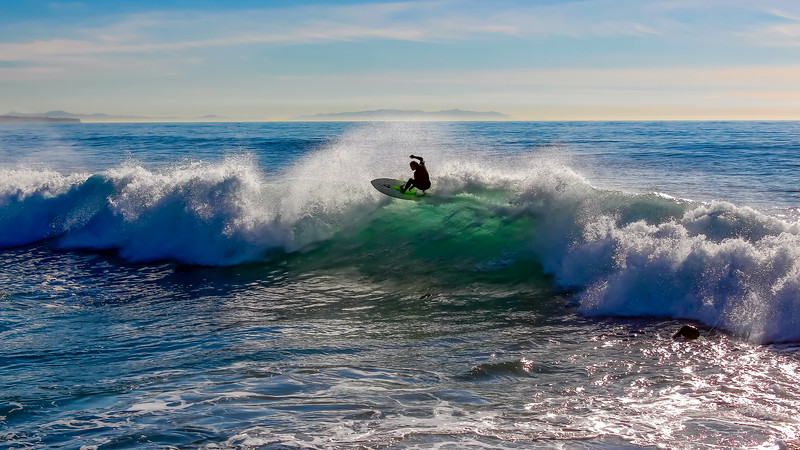According to the Centers for Disease Control and Prevention, “Each year in the U.S., at least 2 million people get an antibiotic-resistant infection, and at least 23,000 people die” (2018). Antibiotic resistance is the ability of bacteria to resist the effects of certain antibiotics; primarily as a result of overuse or misuse of the antibioticsA rise of antibiotic resistance in recent years is jeopardizing our ability to treat infections and diseases (Meek et al., 2015). As a result, determining how antibiotic resistant bacteria and genes get into and are transported through the environment, and what specific effects they have on the human microbiome is gaining importance. Three critical sources of environmental exposure to antibiotic resistant bacteria have been identified: terrestrial agriculture, aquaculture, and wastewater treatment. Once in the environment, people can then be exposed during recreational activities, bathing or swimming, ingestion, and aerosol inhalation.
Surfers and other regular beach-goers are disproportionately vulnerable to direct exposure to resistant bacteria because of resistant bacteria carried into the ocean from stormwater runoff. In order to better understand the health risks associated with direct exposure to resistant bacteria, the Surfrider Foundation and Antibiotic Resistance team are analyzing this source of exposure and its at-risk population. Understanding how the microbiomes of at-risk populations such as surfers differ relative to other groups in different regions will help us better inform policy about water quality and how to address clinical and environmental risks from resistant bacteria exposure.
Team:Carson Smith, Francisco Merlos, Nury Molina, Maria Hammett, Monica Diaz, Joslyn Santana, Ben Burdick
Advisor: Jennifer Jay
Client: Surfrider Foundation
The Surfrider Foundation is dedicated to the protection and enjoyment of the world’s ocean, waves and beaches through a powerful activist network.

